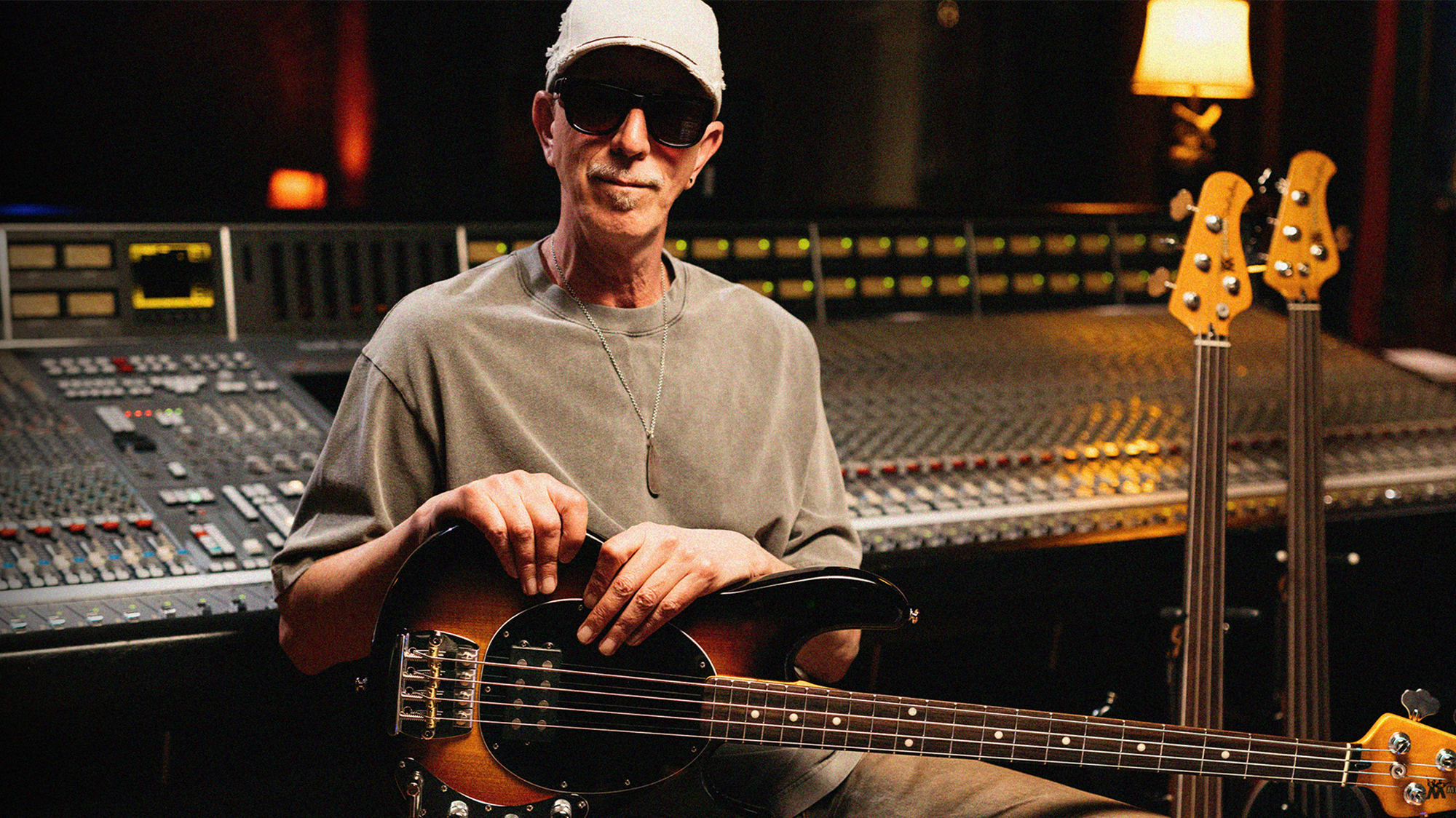“I already played guitar with a pick, so that’s how I played bass. I didn’t know you were supposed to play it with your fingers!” Kim Deal’s DIY attitude with the Pixies inspired a generation of alt-rockers
Kim Deal’s insistent eighth-note basslines were one of the few constants of the Pixies’ zero-to-60 approach to alt-rock
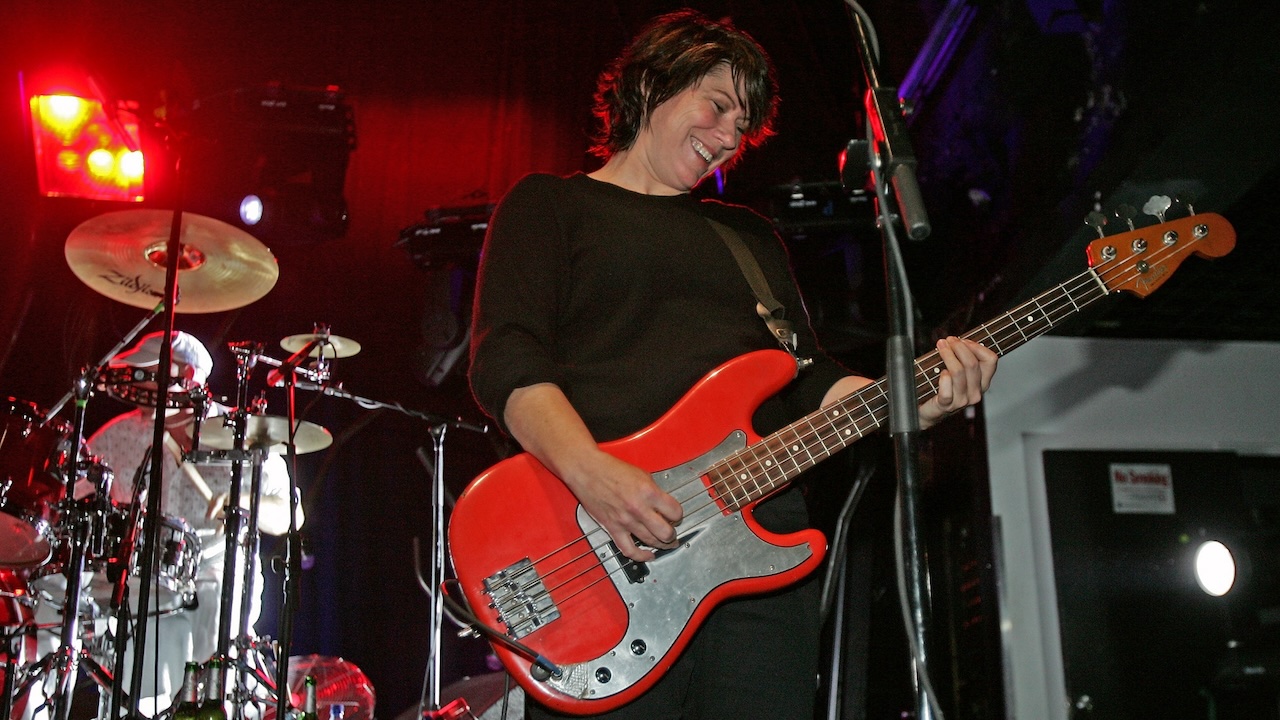
“No chops” demanded the Musicians Wanted ad seeking a female bassist with vocals. It also mentioned an odd combination of preferred influences: folk trio Peter, Paul & Mary and punk rockers Hüsker Dü.
Kim Deal’s response to that 1986 listing led to the formation of the Pixies, a band that inspired a generation of alt-rockers.
“I thought the ad was funny,” said Deal in the November 2004 issue of Bass Player. “I probably replied with something like, ‘I play guitar but I'm sure I can play the bass – it's only got four strings!’
“I think they were really looking to meet rock chicks. Little did they know they'd end up with a married woman! We weren't really good players back in the day. And I think that's a good thing.”
With the Pixies, Deal pumped out picked eighth-note basslines with a top-of-the-beat steadiness that both upheld and upended the jagged phrasing and bipolar dynamics of vocalist/guitarist Charles ‘Black Francis’ Thompson, guitarist Joey Santiago, and drummer David Lovering.
From her bass-craft and vocal contribution on albums like Surfer Rosa, Doolittle, and Trompe le Monde to Bam Thwok, the catchy, download-only Pixies ditty she wrote for the band's 2004 reunion, Deal's creative imprint was always there.
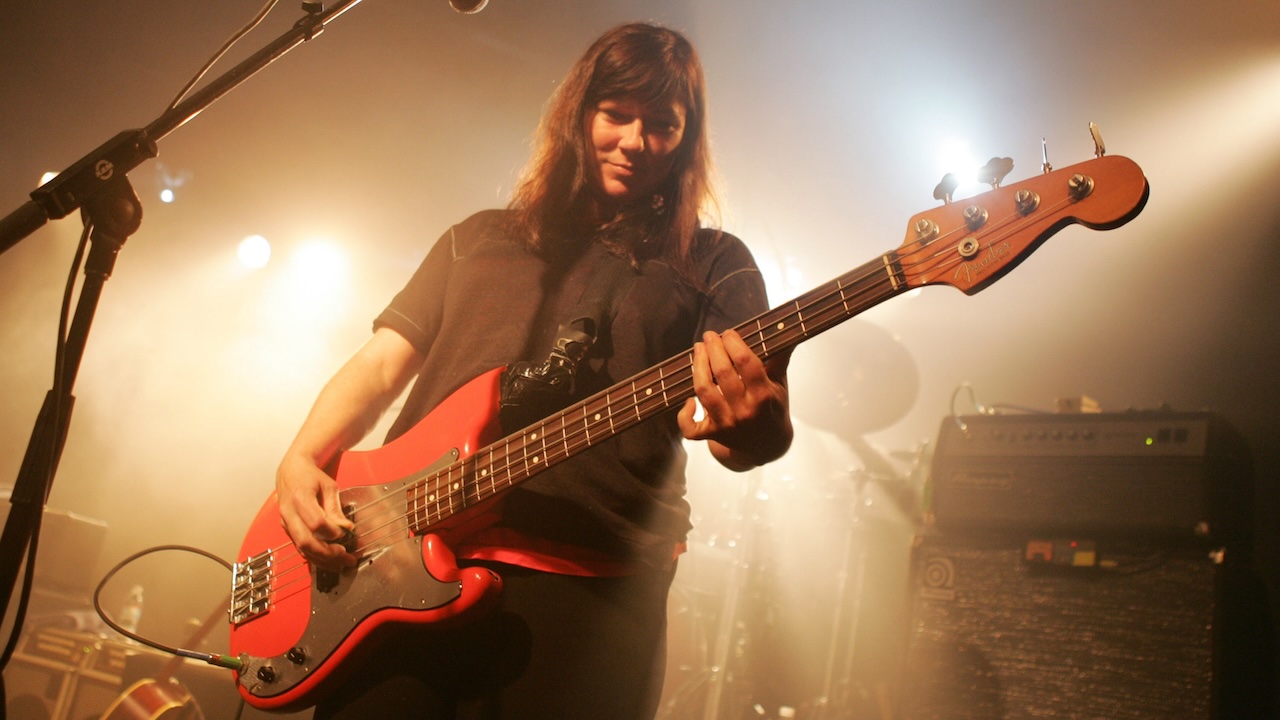
Deal also had the knowledge that there was something about her playing approach that has inspired countless others to play and learn bass guitar.
All the latest guitar news, interviews, lessons, reviews, deals and more, direct to your inbox!
“I think a lot of people say they learned to play bass because of me because there are plenty of songs on the records that are pretty easy to follow. It's not like I started with Rush songs!
“Concrete Blonde’s Johnette Napolitano told me she started playing bass again because of me. Even guys; they think, ‘If she can do it, I can do it.’ That's a good thing, and if girls think the same way, it's really good.”
The following interview was conducted in 2004, shortly after Deal reunited with the Pixies, and finds her reflecting on her bass journey with the band.
Pixies songs have such a range of dynamics. How does that play out in your bass work?
Not much. I don't play any harder or quieter. When you're building a song that has dynamics changes in it, the last thing you want is for people to actually play quietly on the quiet part. You just take stuff out. You build the song so the part is quieter; you don't play quieter. At least I wouldn't.
You excel at one of the harder things to do as a bass player: to play eighth-notes really steadily.
I am good at that, aren't I? It's not easy to do. A lot of players lag behind. It's so irritating. And they're playing with their fingers, so they never really get a good attack at the top, and one hit is louder than the other.
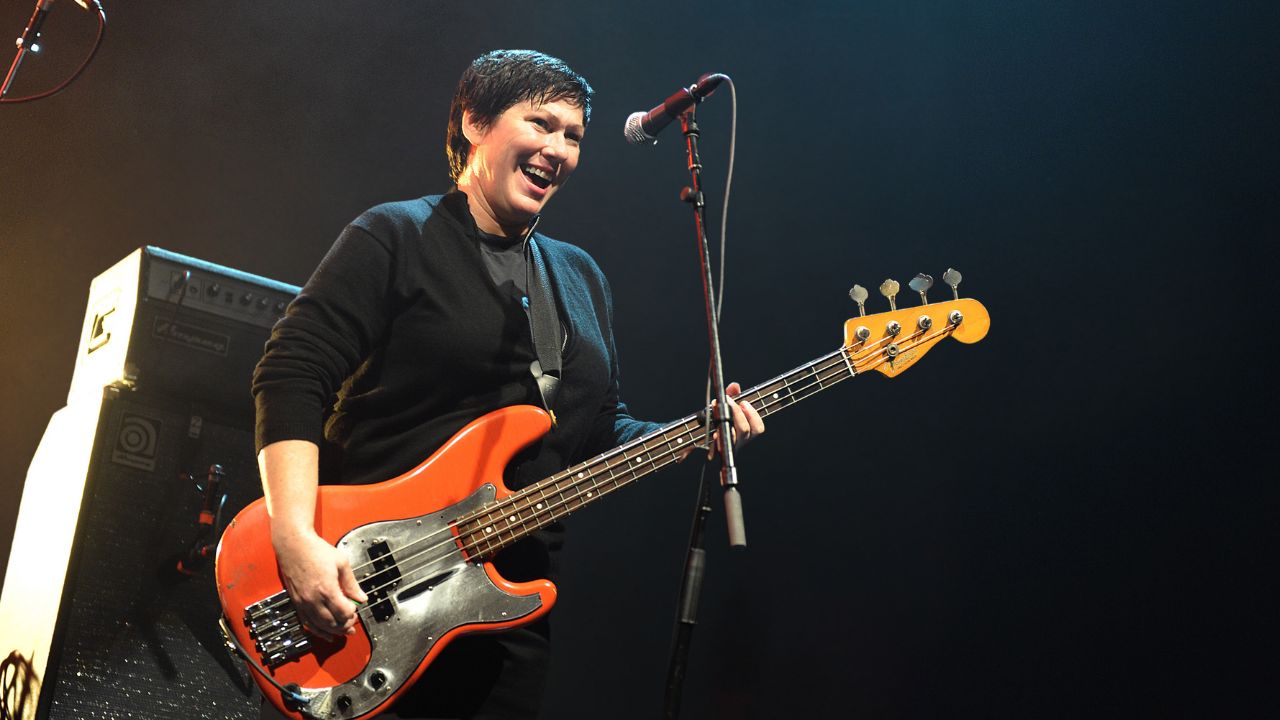
When you started out, were there certain things you were listening to that helped you develop that kind of playing?
Since we started in the late '80s, I think we had a Joy Division or a Cure-like keyboard bass thing going on. Mainly I knew what I didn't like. I didn't like going with the kick drum. There are songs I do that with, but they don't irritate me like bar bands where the bass is constantly going with the kick drum, even when it's supposed to be a rocking number. I knew I didn't want to do whatever that was.
So early on you were thinking about what kind of a bassist you wanted to be?
I wasn't thinking about me as a bass player – it was more like I couldn't participate in a band that's going to sound like those bands. I knew there was no possible way I could stand there and do that. I'd quit. I'm not a musician like that.
So that meant deciding not to play with the kick drum?
It was more of an automatic knee-jerk response. I didn't want to just go with the kick drum because that's what the bass is supposed to do.
But you chose not to go with the guitar, either....
Oh, you mean doing the heavy metal riff when they all go together? That kind of stupidness is sometimes kind of fun. There's one song we do, Planet of Sound, where we do that. It's fun. But it's supposed to be dumb fun.
What's your approach on bass with the Pixies?
To play eighth notes – not always, but most of the time. We're not a dance band. It would be awful to try to play some sort of interesting, intricate rhythm over a 4/4 drumbeat with the hi-hat constantly on the eighth-note. The bass in Pixies is just glue; that's all it is. It's not supposed to be something else.
The Pixies seem to come from that ‘do what you can do’ style of music making.
I'm all about that. If I see somebody up there onstage who's just playing scales really good and showing their dexterity, it's like watching somebody type! It's not like I'm a sucker for a-melodic stuff, either, but if it sounds pretty good, I'm way more into that than the virtuosos.
Is it harder to achieve that sort of visceral, feeling-based thing the more you know about music?
I purposely have used a lot of restraint when it comes to theory. I've made sure I did not know that if I played a certain chord, that the 5th belongs there instead of the 7th.
Maybe some geniuses can see that a certain note belongs there and then be able to choose not to use it, but that kind of knowledge might just block me. I feel like I'd get lazy if I knew the 5th was supposed to go there. I'd just holler out, ‘Yeah, it's a 5th,’ instead of waiting until they make a mistake on it and hearing it.
Even when it's theoretically wrong, it can still sound really super. But unfortunately, because I don't know any of that theory, I would barely be able to jam on a blues gig. I would make as many mistakes as the notes I hit.
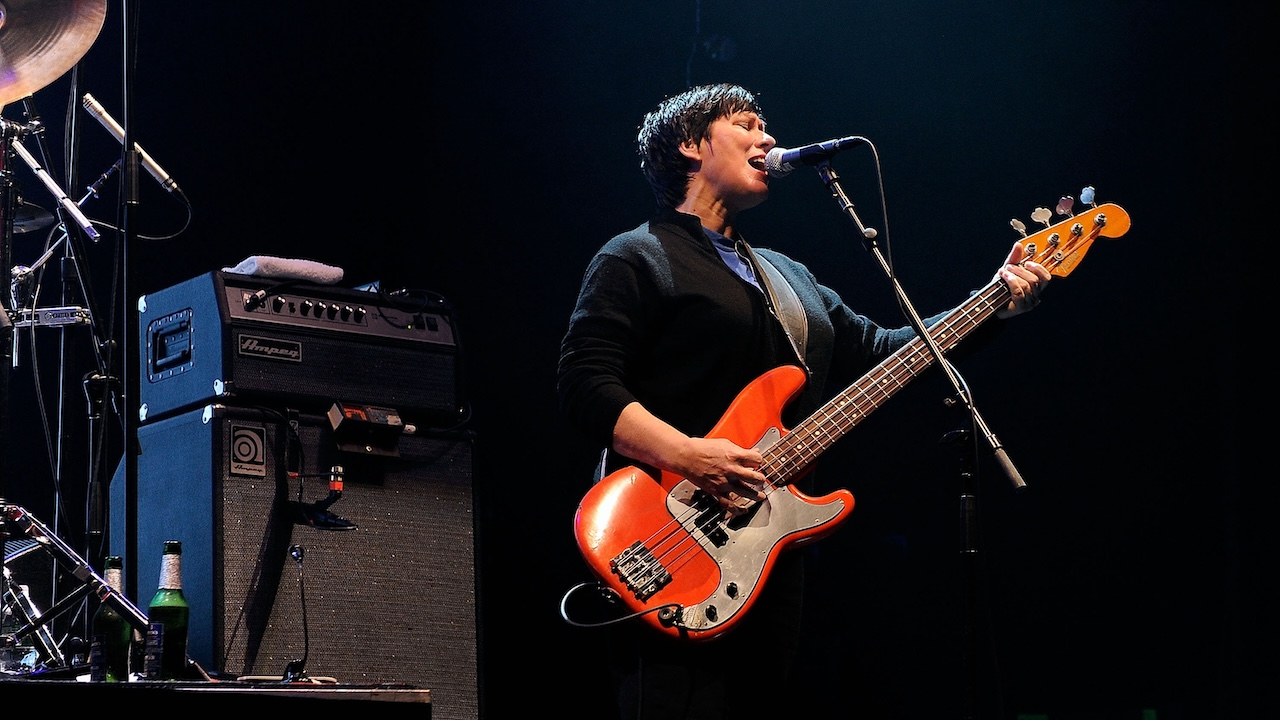
Do you ever write by jamming?
I have, but it's not like jamming on a blues song. It's more somebody coming in with an idea even if it's two chords together, or even a drum beat – and then you try to find a cool rhythm or something within that.
But if I did the other thing, to jam, you almost have to declare what music you're going to be in and the writing is already done in a way. If you're jamming on a blues, you already know you're playing a blues song.
What was your first bass?
It was an Aria Cardinal series. I thought it was so cool because it was just a piece of plank wood or something. It was the weirdest-sounding bass. At first I was always like, ‘It's not a Fender, so it's not cool.’ But then we played with My Bloody Valentine, and that band's bass player had an Aria Pro, too.
When you first started with the Pixies, how did you decide whether to play with a pick or your fingers?
I already played guitar with a pick, so that’s how I played bass. It was so much easier. I didn't even know you were supposed to play it with your fingers!
What's your main bass today?
My main bass is a Fender Precision, and I plug it into an Ampeg SVT. I also have an Ernie Ball Music Man StingRay; I try to swap onstage but there's just no time between songs. The Precision is a '62 reissue.
When did you switch from the Aria?
We were working with producer Gil Norton for Doolittle, and he looked at my Aria bass and was like, ‘Uh, no.’ So I had to go to Boston and buy a bass because he refused to record mine!
How did you record back then?
I usually brought my Peavey Combo 300, and I think I had a Marshall. I always thought it was cool to have a Marshall bass amp, but it never sounded good. The first two records were the Combo 300 and the Aria bass. I'd have a DI in addition to the mic’d combo, so I'd have something thin and something thick.

Usually we did what I think most bands did in the late '80s: You all got in your iso booths and played all together, hoping to keep the rhythm tracks.
You decided which drum track you wanted, did a couple of punch-ins if the bass needed it, and then started working on guitars, which was a bit of a bigger deal since guitar players are so concerned with their sound. And usually they're stuck with the worst mics in the stupidest booths.
Did you keep using the Precision after Doolittle?
No. I got a Music Man StingRay for Bossanova because it was active and had a different sound. I was experimenting with bass sounds then. I used the StingRay as my main instrument live, too. I don't know why. I think probably because it was a little less country-sounding than the Fender.
And then, for Trompe le Monde, we were doing a song in the studio and whatever bass I was using was out of tune high up on the neck, which was bothering Gil, so I went and got a Steinberger.
I played it on one song; it was kind of okay because it had this weird, organ-y sound, which I liked, but I was embarrassed to play it. It's odd; there's no headstock. I don't know why they do that.
Any special picks?
The green Dunlops with the little turtle on them.
How about strings?
Whatever anybody puts on. Hopefully they're old. I can't take new strings. I think I have a set of Dean Markley Blue Steels.
How do you approach singing and playing bass?
It was so much different from playing rhythm guitar and singing. I really had to practice. Since what I sing with the Pixies is usually not the lead melody line, it doesn't always start at the top of the four-count, so that makes it hard, too.
Also, for some reason, all of our guitar parts are kind of odd – maybe it's because of our ‘no blues’ rule. So especially live, if we're playing on a stage where I can't really hear the band, the only pure note I have to clue me in on the pitch is Joe's guitar. So yeah, that was hard live.
I'm better live now because I wear one earplug. But it was really odd – especially starting Gigantic. Whatever I was singing would work, until the introduction of an actual note, that is.
You must confirm your public display name before commenting
Please logout and then login again, you will then be prompted to enter your display name.


